HDGF Polyclonal Antibody
- Catalog No.:YT5974
- Applications:IHC;IF;ELISA
- Reactivity:Human;Rat;Mouse;
- Target:
- HDGF
- Gene Name:
- HDGF HMG1L2
- Protein Name:
- Hepatoma-derived growth factor (HDGF) (High mobility group protein 1-like 2) (HMG-1L2)
- Human Gene Id:
- 3068
- Human Swiss Prot No:
- P51858
- Mouse Gene Id:
- 15191
- Mouse Swiss Prot No:
- P51859
- Immunogen:
- Synthetic peptide from human protein at AA range: 141-190
- Specificity:
- The antibody detects endogenous HDGF
- Formulation:
- Liquid in PBS containing 50% glycerol, 0.5% BSA and 0.02% sodium azide.
- Source:
- Polyclonal, Rabbit,IgG
- Dilution:
- IHC 1:50-200, ELISA 1:10000-20000. IF 1:50-200
- Purification:
- The antibody was affinity-purified from rabbit antiserum by affinity-chromatography using epitope-specific immunogen.
- Concentration:
- 1 mg/ml
- Storage Stability:
- -15°C to -25°C/1 year(Do not lower than -25°C)
- Other Name:
- Hepatoma-derived growth factor (HDGF;High mobility group protein 1-like 2;HMG-1L2)
- Background:
- This gene encodes a member of the hepatoma-derived growth factor family. The encoded protein has mitogenic and DNA-binding activity and may play a role in cellular proliferation and differentiation. High levels of expression of this gene enhance the growth of many tumors. This gene was thought initially to be located on chromosome X; however, that location has been determined to correspond to a related pseudogene. Alternatively spliced transcript variants encoding distinct isoforms have been described. [provided by RefSeq, Jan 2016],
- Function:
- domain:The PWWP domain harbors the heparin-binding sites and is responsible for DNA-binding, while the C-terminal region is essentially unstructured.,function:Heparin-binding protein, with mitogenic activity for fibroblasts. Acts as a transcriptional repressor.,PTM:Sumoylated by SUMO1. Sumoylation prevents binding to chromatin.,similarity:Belongs to the HDGF family.,similarity:Contains 1 PWWP domain.,subunit:Monomer, and domain-swapped homodimer.,tissue specificity:Ubiquitous.,
- Subcellular Location:
- [Isoform 1]: Nucleus . Cytoplasm . Secreted, extracellular exosome . Secreted by exosomes and is located inside the exosome (PubMed:27926477). May also be secreted as free protein via an as yet unknown pathway (PubMed:27926477). .; [Isoform 2]: Nucleus . Cytoplasm . Secreted, extracellular exosome . Secreted by exosomes and is located on the outer exosome surface. .; [Isoform 3]: Nucleus . Cytoplasm . Secreted, extracellular exosome . Secreted by exosomes and is located on the outer exosome surface. .
- Expression:
- Ubiquitous.
- June 19-2018
- WESTERN IMMUNOBLOTTING PROTOCOL
- June 19-2018
- IMMUNOHISTOCHEMISTRY-PARAFFIN PROTOCOL
- June 19-2018
- IMMUNOFLUORESCENCE PROTOCOL
- September 08-2020
- FLOW-CYTOMEYRT-PROTOCOL
- May 20-2022
- Cell-Based ELISA│解您多样本WB检测之困扰
- July 13-2018
- CELL-BASED-ELISA-PROTOCOL-FOR-ACETYL-PROTEIN
- July 13-2018
- CELL-BASED-ELISA-PROTOCOL-FOR-PHOSPHO-PROTEIN
- July 13-2018
- Antibody-FAQs
- Products Images
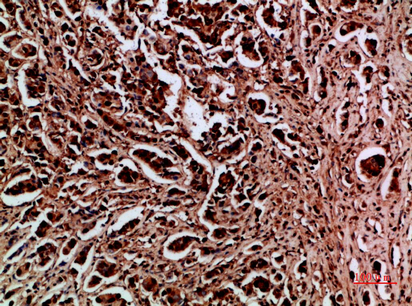
- Immunohistochemical analysis of paraffin-embedded human-breast-cancer, antibody was diluted at 1:200
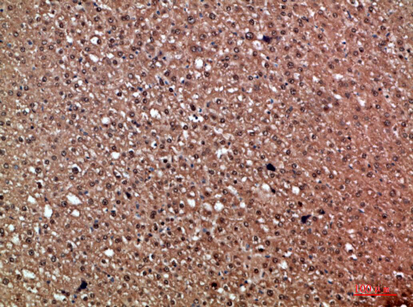
- Immunohistochemical analysis of paraffin-embedded human-liver-cancer, antibody was diluted at 1:200
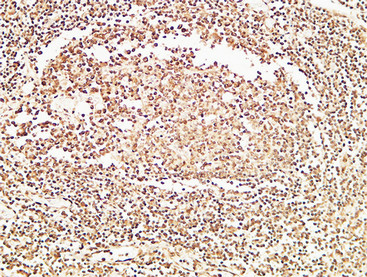
- Immunohistochemical analysis of paraffin-embedded Human Amygdala. 1, Antibody was diluted at 1:200(4° overnight). 2, High-pressure and temperature EDTA, pH8.0 was used for antigen retrieval. 3,Secondary antibody was diluted at 1:200(room temperature, 30min).
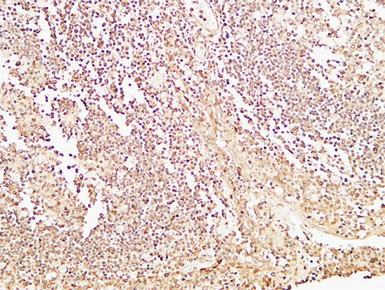
- Immunohistochemical analysis of paraffin-embedded Human Amygdala. 1, Antibody was diluted at 1:200(4° overnight). 2, High-pressure and temperature EDTA, pH8.0 was used for antigen retrieval. 3,Secondary antibody was diluted at 1:200(room temperature, 30min).
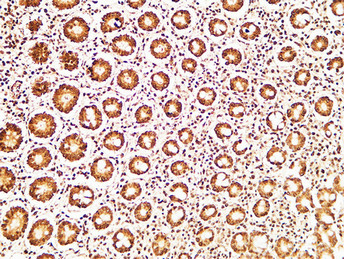
- Immunohistochemical analysis of paraffin-embedded Human colon. 1, Antibody was diluted at 1:200(4° overnight). 2, High-pressure and temperature EDTA, pH8.0 was used for antigen retrieval. 3,Secondary antibody was diluted at 1:200(room temperature, 30min).
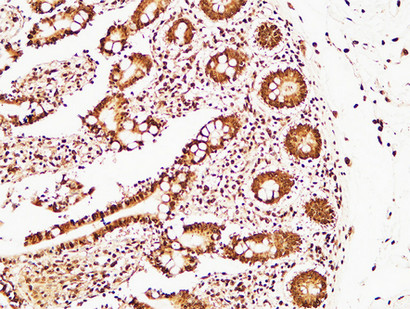
- Immunohistochemical analysis of paraffin-embedded Human colon. 1, Antibody was diluted at 1:200(4° overnight). 2, High-pressure and temperature EDTA, pH8.0 was used for antigen retrieval. 3,Secondary antibody was diluted at 1:200(room temperature, 30min).



